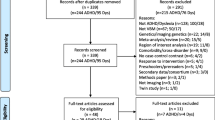Abstract.
Recent work in the field of developmental dyslexia has emphasized the large-scale neural aspects of the disorder as measured by means of contemporary imaging techniques, electrophysiology, and post-mortem analyses. This article presents findings from these research domains and comprehensively reviews their relevance with respect to the behavioral and cognitive profiles of dyslexia. Large-scale alterations were observed in the perisylvian region across paradigms. Convergent evidence has also been reported in terms of hemispheric balance. Specifically, deviances in cerebral asymmetry associated with atypical organization of the left hemisphere were found in both children and adults with dyslexia. Emerging research encompassing high-temporal resolution methods such as magnetoencephalography (MEG) suggests right-hemisphere involvement and points to the complexity of the developmental disorder. A combined approach of structural imaging and MEG, and most importantly theory driven behavioral tasks may shed light on dynamics and trajectories of the neurobiology of dyslexia.
Similar content being viewed by others
Author information
Authors and Affiliations
Corresponding author
Rights and permissions
About this article
Cite this article
Heim, S., Keil, A. Large-scale neural correlates of developmental dyslexia. European Child & Adolescent Psychiatry 13, 125–140 (2004). https://doi.org/10.1007/s00787-004-0361-7
Accepted:
Issue Date:
DOI: https://doi.org/10.1007/s00787-004-0361-7




